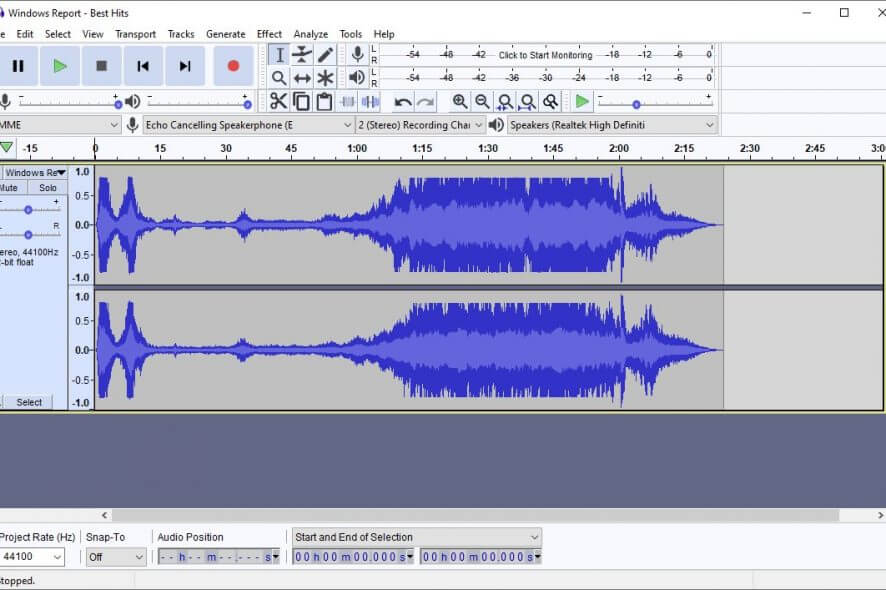

OPEN SOURCE AUDIO AUDACITY HAS BECOME UPDATE
Under the GDPR, individuals have certain data protection rights, including the right to access, correct, update or request deletion of their personal information, which you can exercise by emailing However, these rights only apply to the extent that the controller is able to identify the individuals whose personal information is collected. We delete all data within 12 months of it being collected." For these reasons, it is impossible for us to identify you."Ħ.2 - "All data is anonymised before storage. For error reporting, your IP address is discarded entirely. We do not store or share any personal information."Ħ.1 - "Data storage, retention and deletionįor update checking, your IP address is fully anonymised before storage. "Who do we share your personal information with? I guess they must have changed their privacy policy in the last 7 months:Ĥ. That privacy statement was taken down and replaced a couple of weeks later with the (much more reasonable) privacy statement that can be seen on the Audacity website now. Sadly there has been a lot of FUD about these features, in part because someone from Muse posted a very poor draft privacy statement on the Audacity website (probably due to poor legal advice, but that's just my conjecture). It can be turned off at any time in "Preferences > Application".
OPEN SOURCE AUDIO AUDACITY HAS BECOME HOW TO
In the case of Audacity, there's even a pop-up on first run telling you how to do that. This was a frequently requested feature which was recently added and many users find it very convenient.Īs with Firefox and many other open source apps that have automatic update notifications, you can turn this feature off. When a crash report is generated, you have the option to submit it or not - it's your choice, it is not sent unless you click the Send button. This is a common and extremely useful feature in many apps, including open source apps. A window will now, click Get Noise Profile.There are two cases where Audacity may "phone home": Then Use the Selection Tool to highlight the section of background noise and go to Effect > Noise Reduction. Noise removal tool is easy to use and performs wonders.įind and locate a section of audio that only has the background noise you wish to remove. Then WHAM, annoyingly there’s a horrible buzzingīut, fear not. It happens often, as a filmmaker, you head out and get the equipment set up, make sure there are no loud noises to interfere with the filmmaking, you then wrap up filming for the day and head into post-production. You can now move them onto separate tracks.

If you wish to overlap the files, no problem at Then click and select on the file you wish to move.

To access the Timeshift tool, press F5 on your keyboard, and the tool will appear. Moving audio files in Audacity is very simple, to move your files use the Timeshift tool. However, Audacity is the complete opposite. When moving audio files around in audio editors, usually they’re pretty difficult and are not intuitive. Here we discuss a few tips for editing audio inĪudacity and simple tricks to make it a smooth, enjoyable process. It’s pretty simple to use when you get into it and has multiple audio editing functions like removing background noise in your audio and recording voiceovers for your next documentary.Īll in all, Audacity provides you with all theįeatures of a premium audio editing program, but without charging you a largeĮven if you aren’t looking to use Audacity for the medium of the film it’s a great tool to produce music or start up your own podcast.

What is Audacity?Īudacity is an open-source audio editing and audio recording program that is free. We will take a look at what Audacity is and keyĮxamples of how to get started with Audacity. However, we will look into audio editing on a budget and how you can edit your audio to the highest level without the cost. It all adds up with the equipment, production costs, and post-production costs. These days filmmaking can be on the expensive side.


 0 kommentar(er)
0 kommentar(er)
